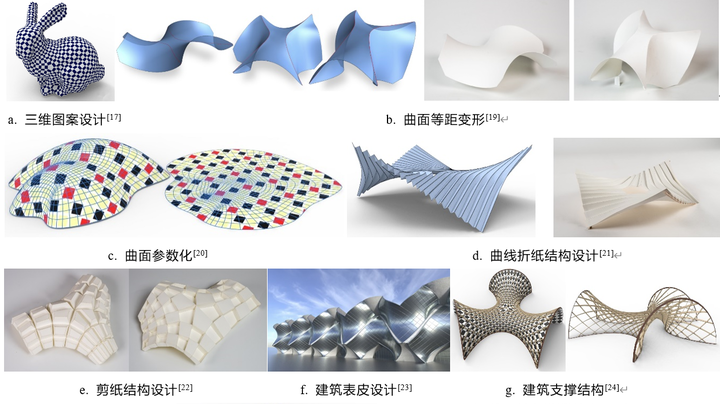面向设计与制造的建筑几何综述 A Survey of Architectural Geometry for Design and Fabrication
 By Caigui Jiang
By Caigui Jiang
Abstract
Architectural geometry, as an emerging interdisciplinary research field, aims to address geometric challenges encountered throughout architectural design and fabrication processes. It bridges multiple disciplines, including architecture, geometry, engineering, and computer science. This paper systematically reviews the research pro-gress in the field of architectural geometry, with a particular focus on the significant advantages of quadrilateral mesh-based discrete modeling in architectural design and construction. It also briefly introduces relevant stud-ies involving other mesh types such as triangular and hexagonal meshes. The discussion centers on recent ad-vances in discrete surface modeling, structural support systems, and design methodologies oriented toward fab-rication. Furthermore, the article analyzes the applicability and limitations of existing research in terms of dis-cretization modeling and manufacturability. It highlights the developmental trend of architectural geometry to-wards a deeper integration of geometric modeling with digital construction and intelligent fabrication, aiming to promote the intelligent transformation of the architectural design and fabrication pipeline. This work offers a valuable reference for future research in the field.
Supplementary notes can be added here, including code and math.